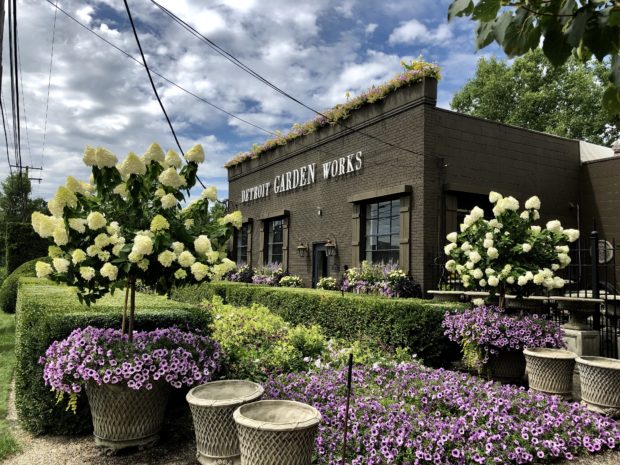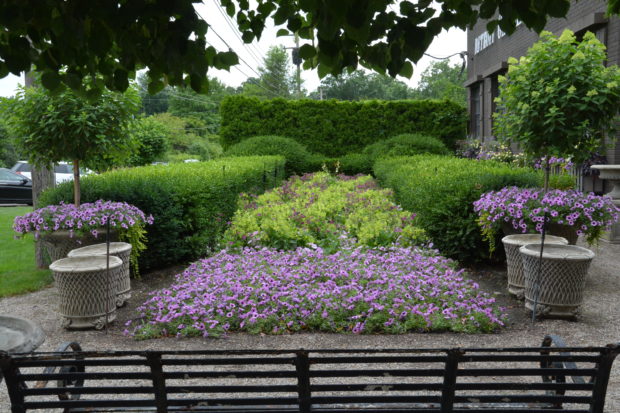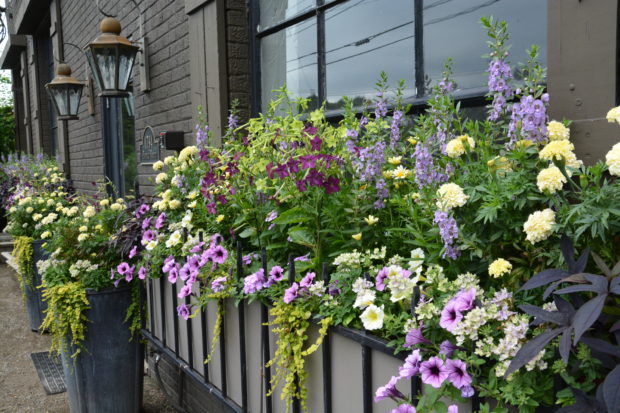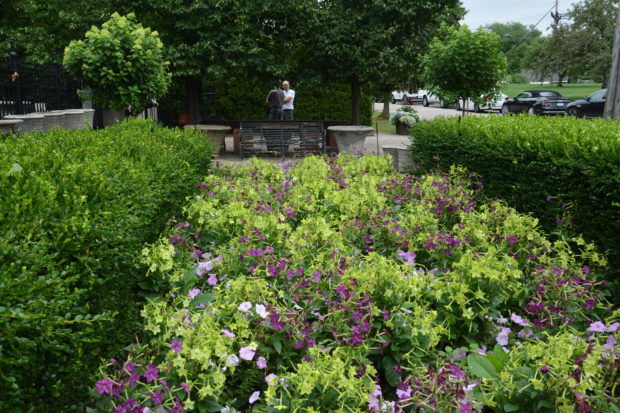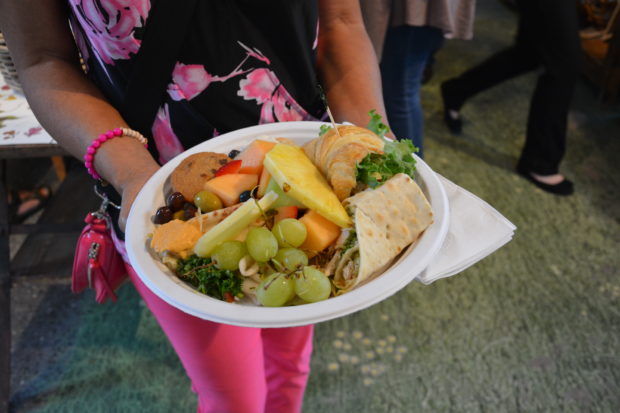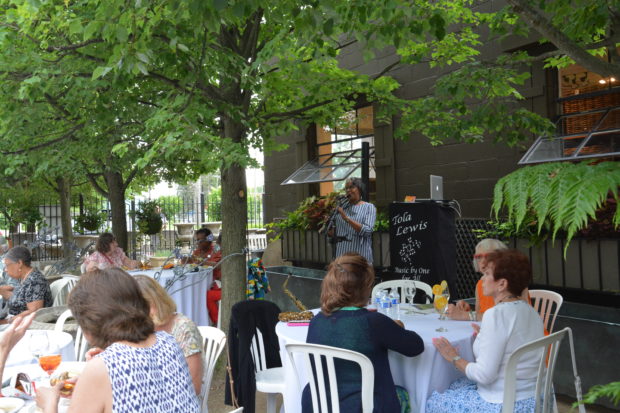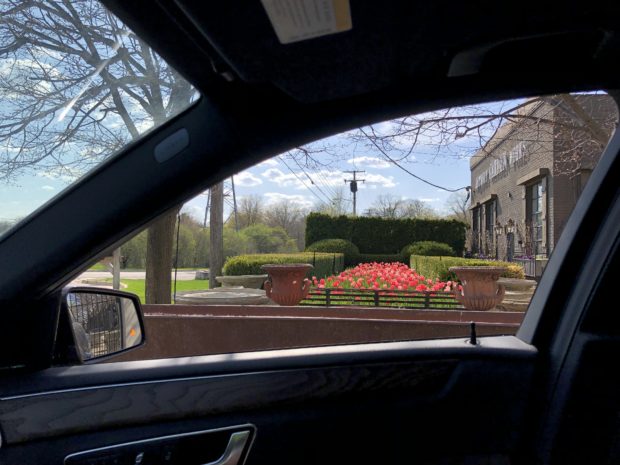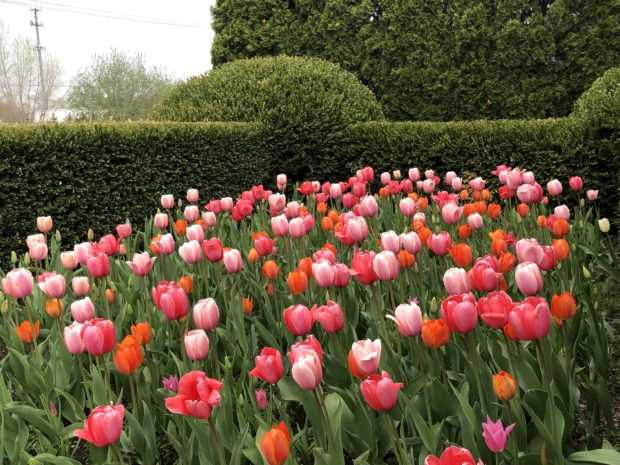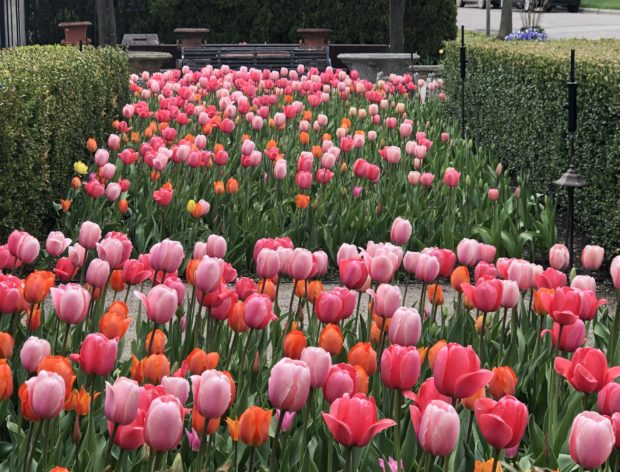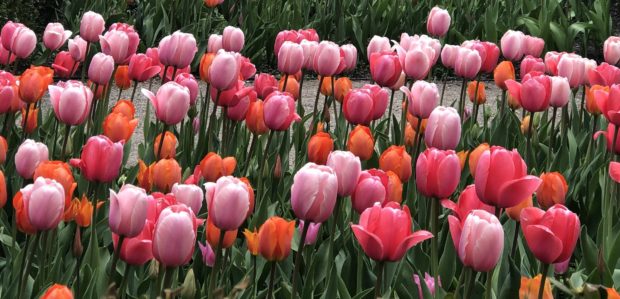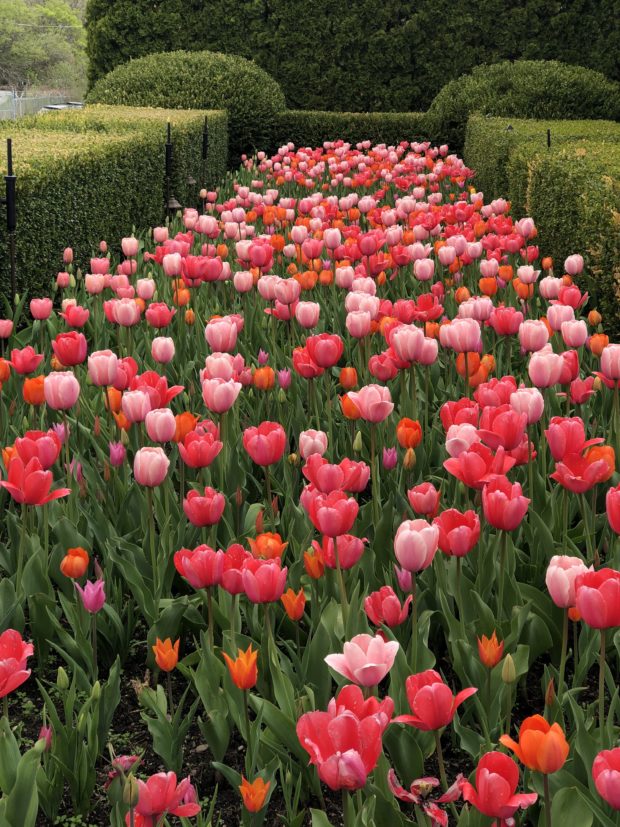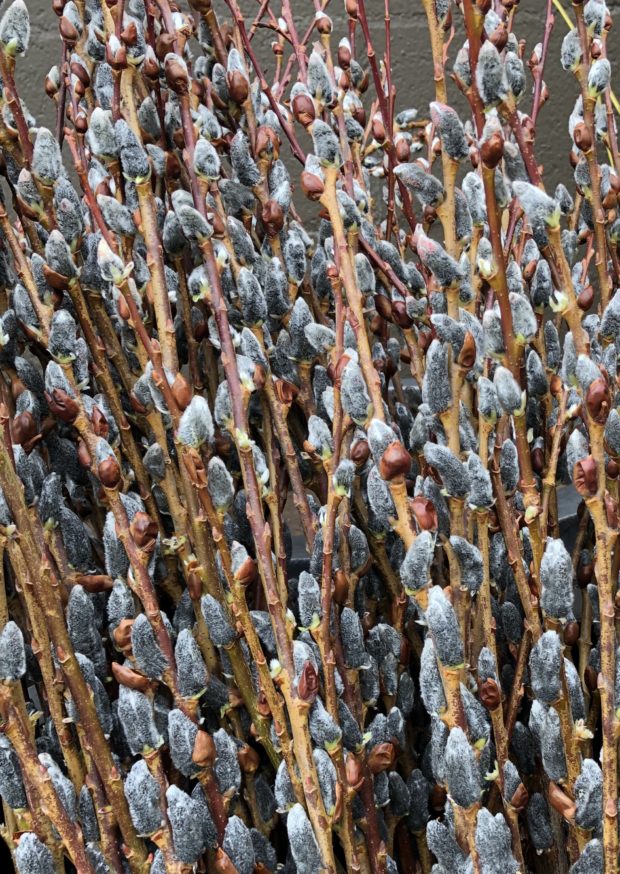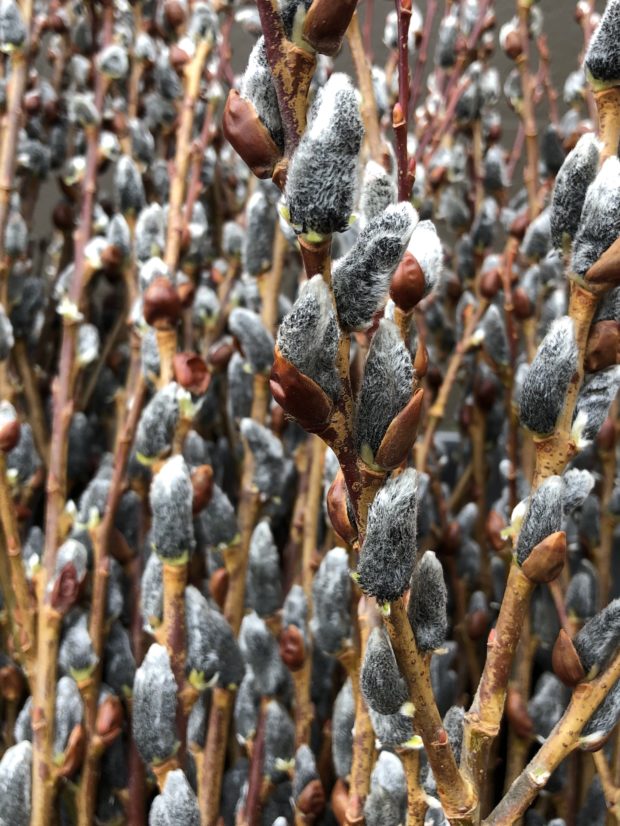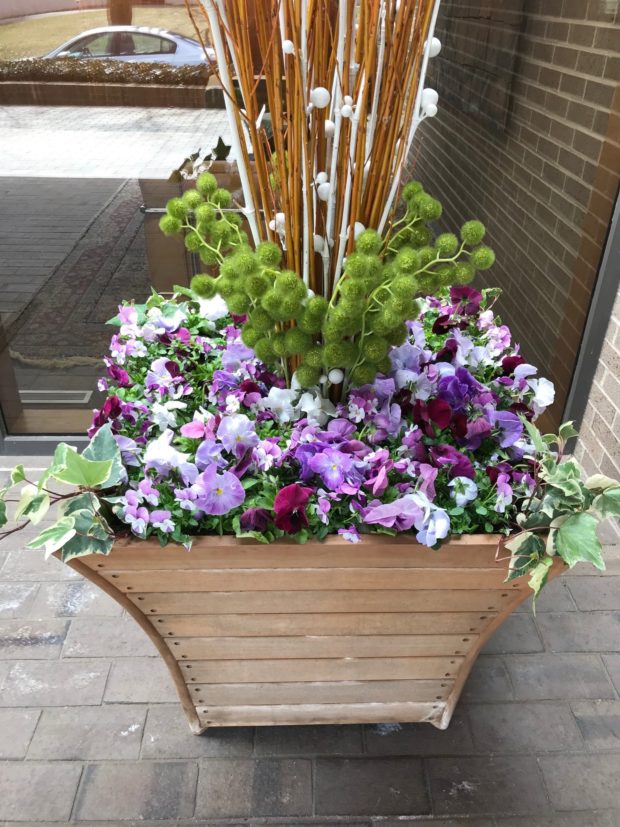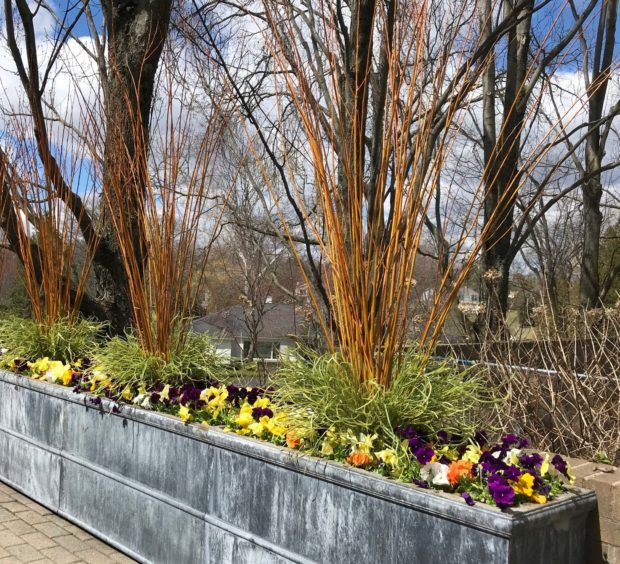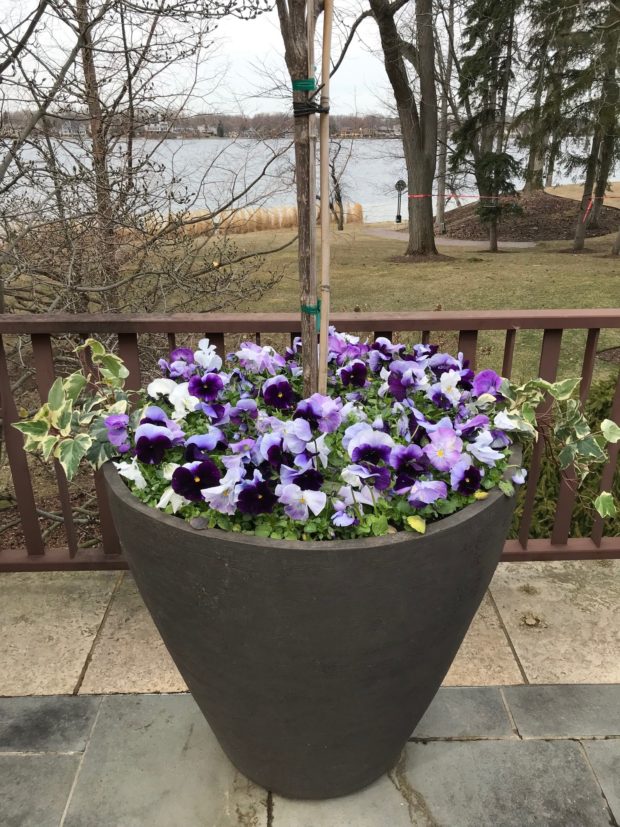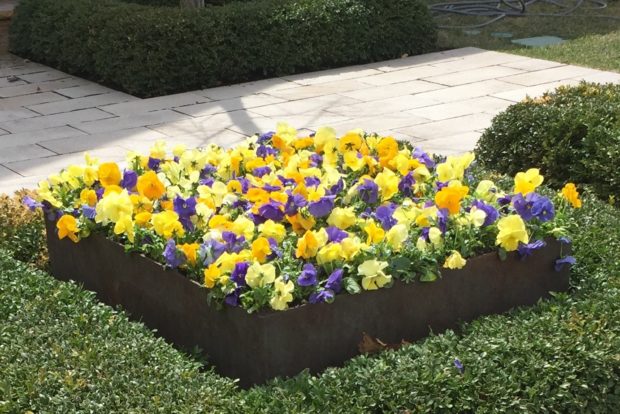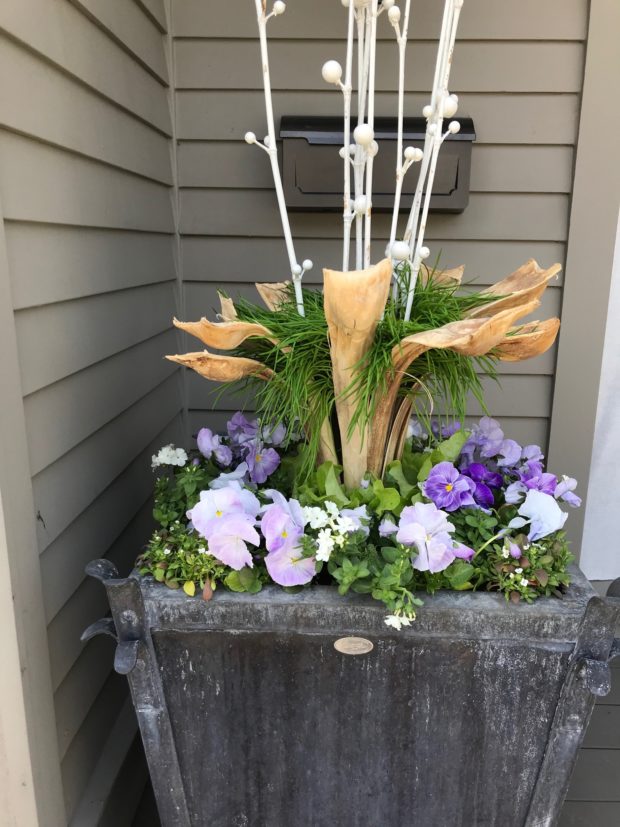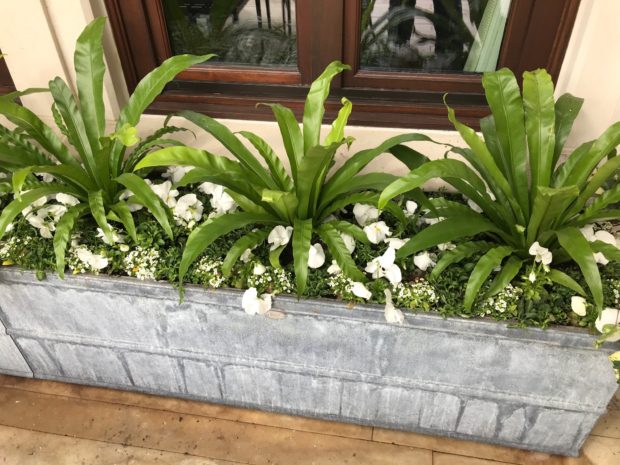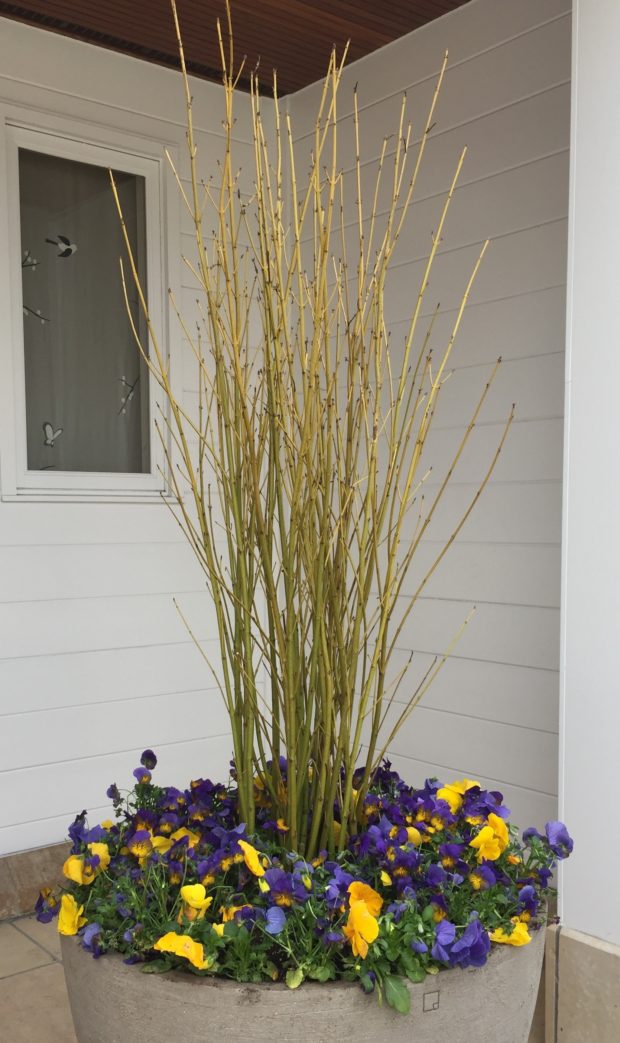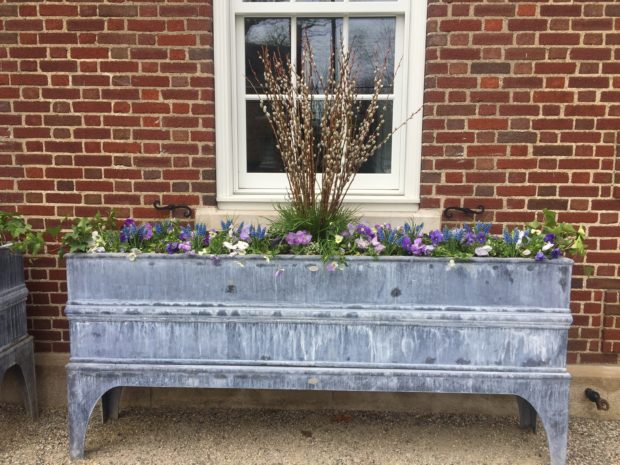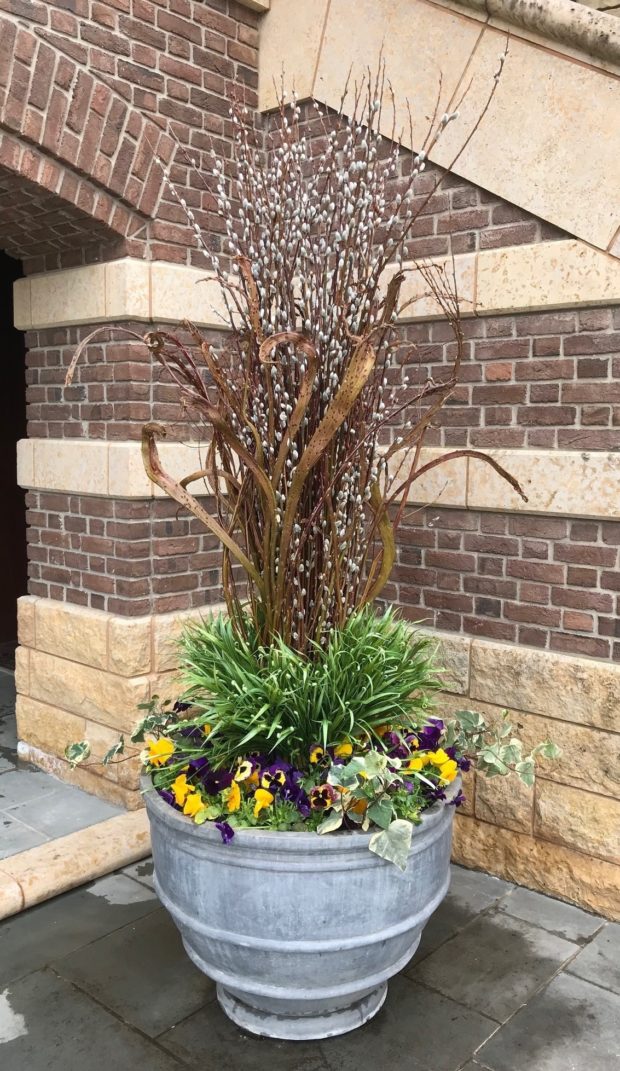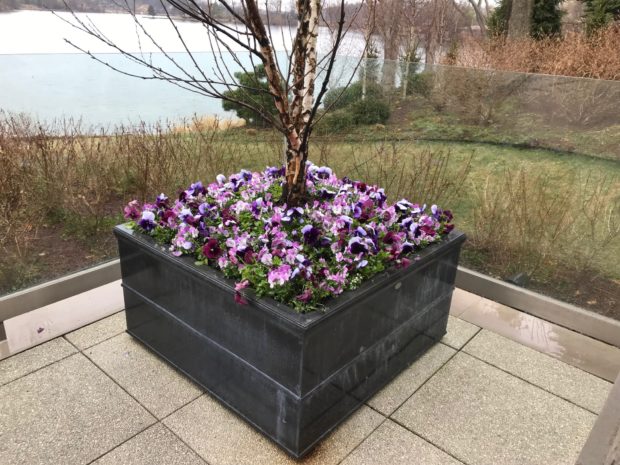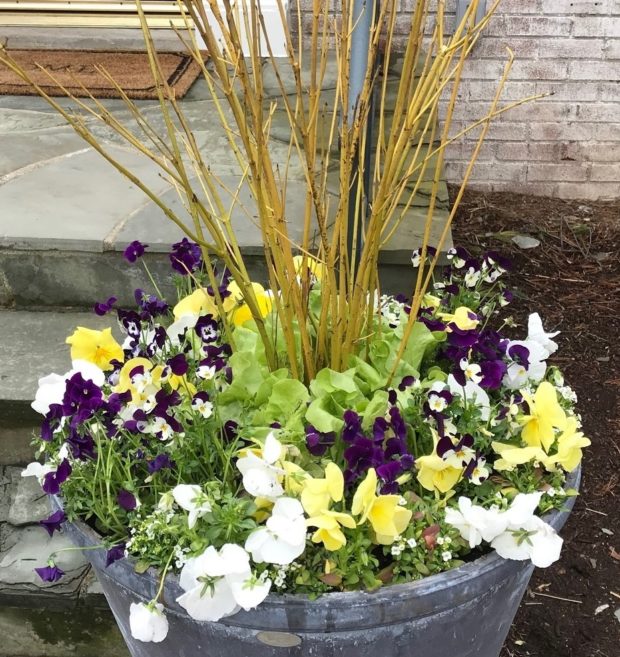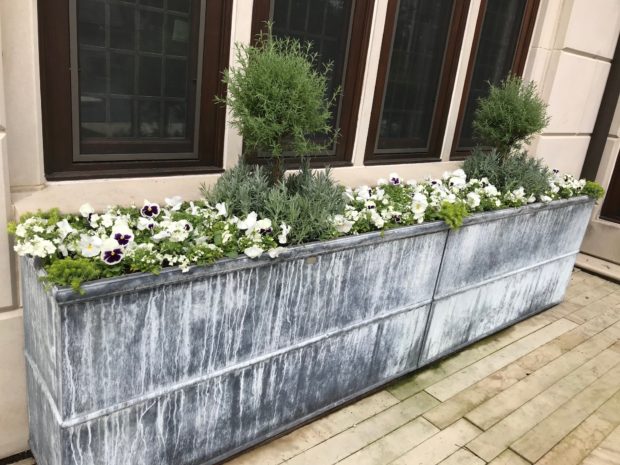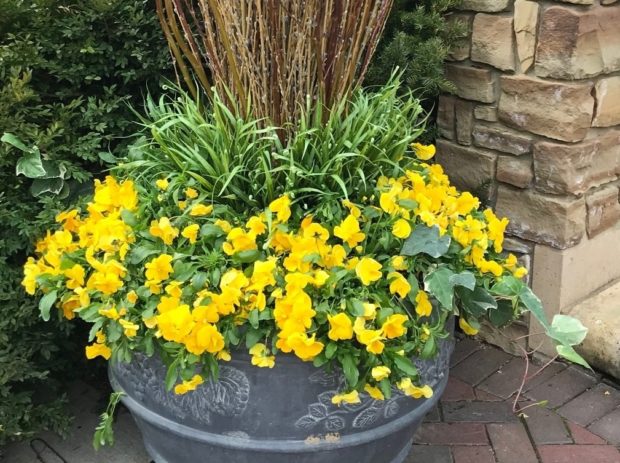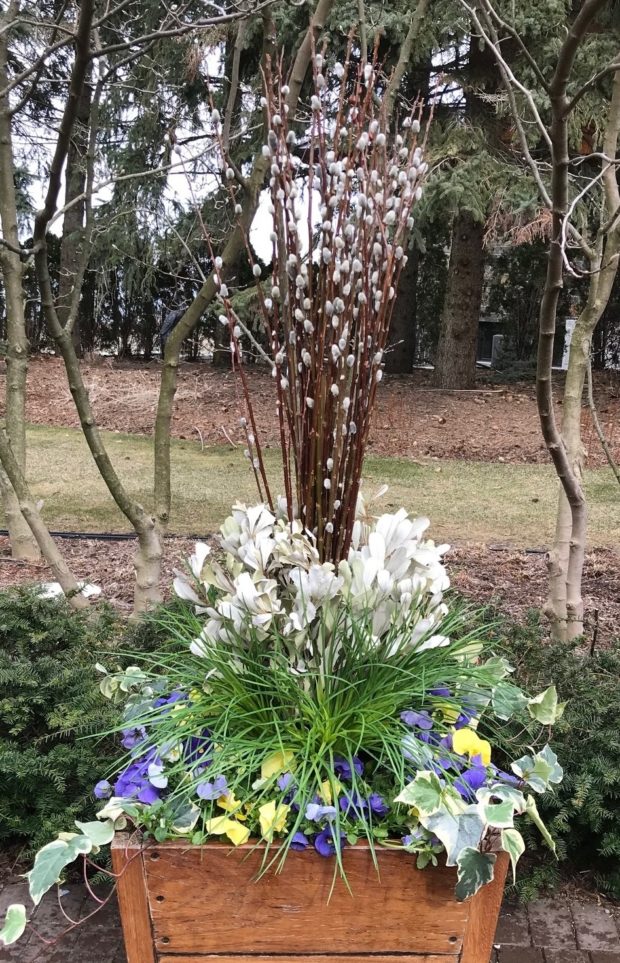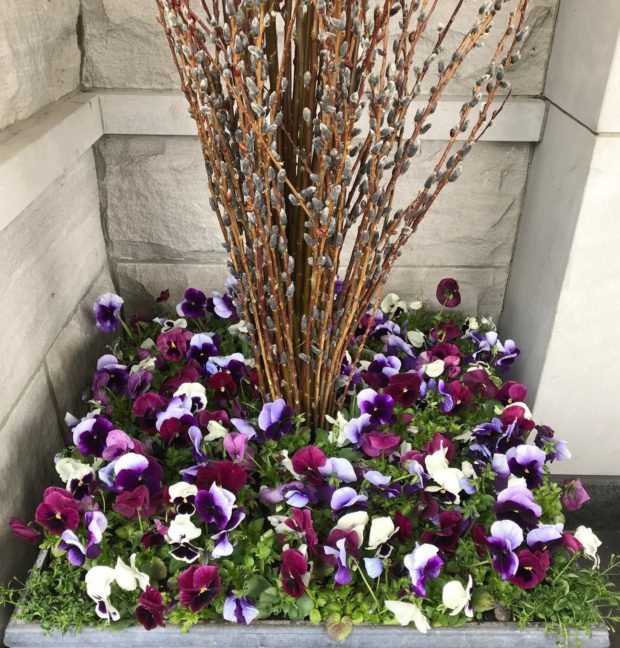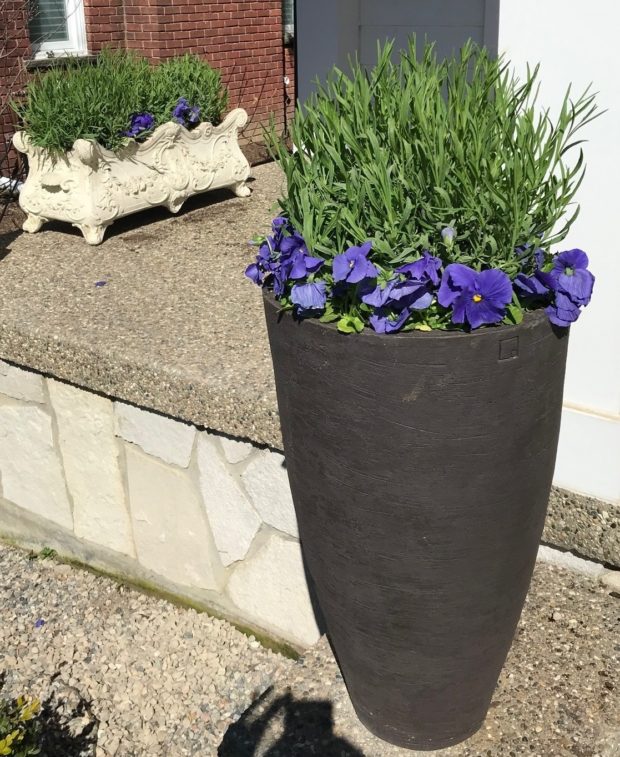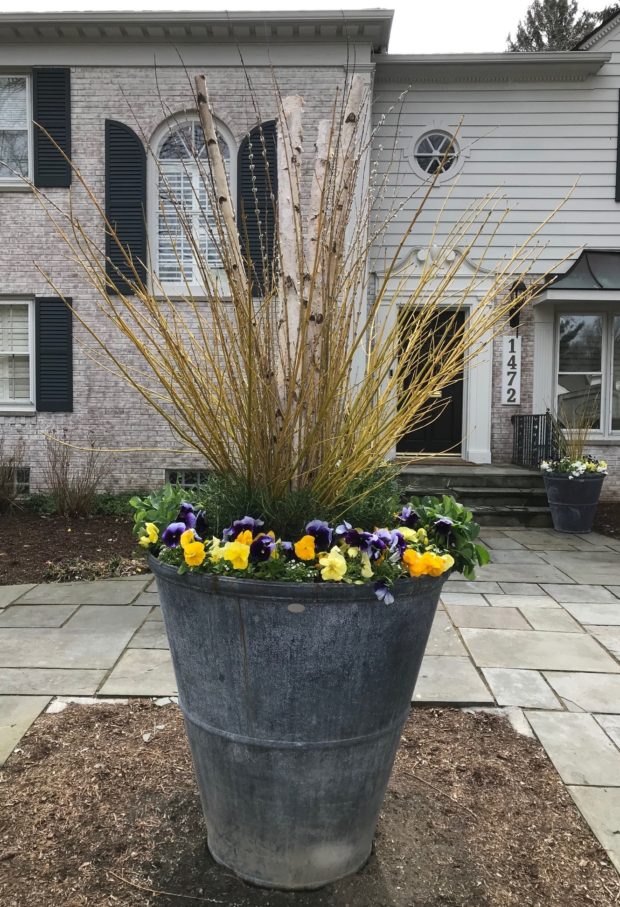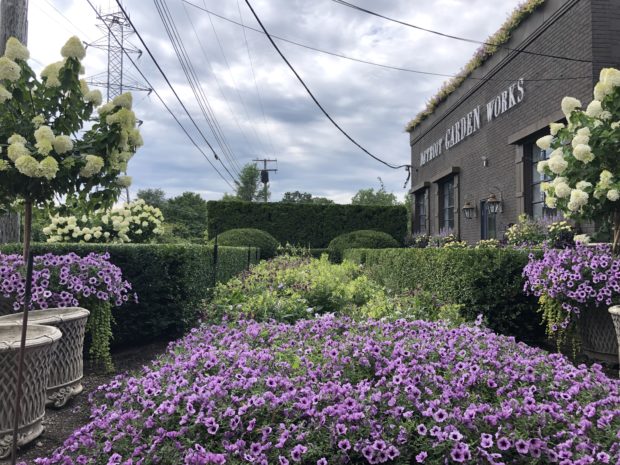 Did I spend weeks designing and specifying plant material for the shop garden this past February? No, absolutely not. I rarely think about the shop plantings until our work for clients is coming to a close. That means that I scout what seasonal plant material is still available in late June or early July. I actually don’t think it matters that much what we plant. What matters is that we plant. I am a fan of any person who plants. And doubly so for those who plant and plant again. I have no need to weigh in about what is good to plant. Anyone who plants trees, vegetables, perennials, shrubs or season plants in any configuration or design – I thank you and respect you for planting. Planting is work, but it is entertaining and satisfying work. Making something grow is a good use of time in every sense of the phrase.
Did I spend weeks designing and specifying plant material for the shop garden this past February? No, absolutely not. I rarely think about the shop plantings until our work for clients is coming to a close. That means that I scout what seasonal plant material is still available in late June or early July. I actually don’t think it matters that much what we plant. What matters is that we plant. I am a fan of any person who plants. And doubly so for those who plant and plant again. I have no need to weigh in about what is good to plant. Anyone who plants trees, vegetables, perennials, shrubs or season plants in any configuration or design – I thank you and respect you for planting. Planting is work, but it is entertaining and satisfying work. Making something grow is a good use of time in every sense of the phrase.
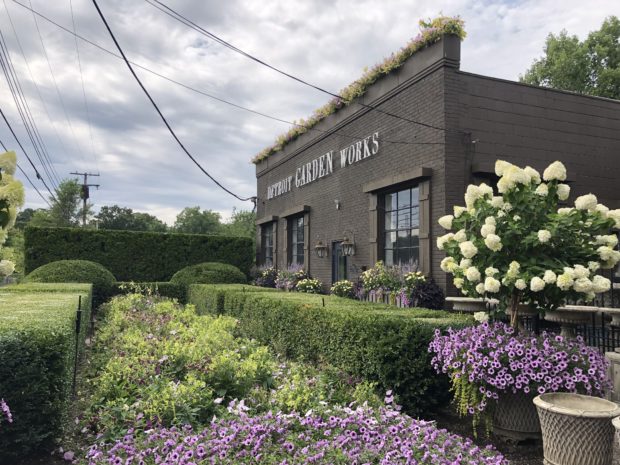 You might be aghast that the shop seasonal garden design and installation hinges on the left overs at those greenhouses where we shop, but I am used to this arrangement. I do not mind in the least bit being last in line. I relish the challenge. Any skilled designer should be able to make sense of an impromptu collection of plants they never expected to put together. Surprise is a vastly underrated design element. Surprise without angst, that is. I can always tell if a seasonal planting has been thrown together in a panic at the last minute. Last minute panic usually has that aura. But last minute does not necessarily imply a lack of design. Designing from a very limited palette of plants available in equally limited numbers is my idea of a good time. Of course some outcomes are better or more interesting than others.
You might be aghast that the shop seasonal garden design and installation hinges on the left overs at those greenhouses where we shop, but I am used to this arrangement. I do not mind in the least bit being last in line. I relish the challenge. Any skilled designer should be able to make sense of an impromptu collection of plants they never expected to put together. Surprise is a vastly underrated design element. Surprise without angst, that is. I can always tell if a seasonal planting has been thrown together in a panic at the last minute. Last minute panic usually has that aura. But last minute does not necessarily imply a lack of design. Designing from a very limited palette of plants available in equally limited numbers is my idea of a good time. Of course some outcomes are better or more interesting than others.
 What is the most important factor in a beautiful planting? Well grown and maintained plants have to be at the top of that list. Some plants are not so much to my taste, but any well grown plant has a beauty that is undeniable. It takes effort not to admire a well grown and mature stand of shasta daisies. It is easy to pass over a planting that has had haphazard care, no matter how interesting and extraordinary the plants. The care and maintenance, as in on time watering, grooming, feeding, deadheading, dividing and weeding, is key to a beautiful planting. The window boxes pictured above get a good deal of attention over the summer. As we are in love and in business over the garden, I insist that we take great care of our plantings. The star of our show in the window boxes is a new Proven Winners angelonia known as “Steel Blue”. My grower got a number of cuttings in late, and when we were ready to plant they were looking extraordinarily good.
What is the most important factor in a beautiful planting? Well grown and maintained plants have to be at the top of that list. Some plants are not so much to my taste, but any well grown plant has a beauty that is undeniable. It takes effort not to admire a well grown and mature stand of shasta daisies. It is easy to pass over a planting that has had haphazard care, no matter how interesting and extraordinary the plants. The care and maintenance, as in on time watering, grooming, feeding, deadheading, dividing and weeding, is key to a beautiful planting. The window boxes pictured above get a good deal of attention over the summer. As we are in love and in business over the garden, I insist that we take great care of our plantings. The star of our show in the window boxes is a new Proven Winners angelonia known as “Steel Blue”. My grower got a number of cuttings in late, and when we were ready to plant they were looking extraordinarily good.
 I am very impressed by its performance. They grow tall on sturdy stems, and they seem to handle hot and humid weather without skipping a beat. That pale carmine color is beautiful. That color so echoes the striking color of bordeaux petunias. Summer snapdragon-what a charming common name for this seasonal plant. They relish the heat, and they bloom profusely. They look especially good paired with nicotiana “Purple Perfume”, which is an all-America selection. An All America selection? Look to this designation for plants that are likely to perform beautifully throughout our summer season. The All America designation is not awarded to many. It is conferred upon plants that thrive. Lime nicotiana and creeping jenny is companionable with almost any color scheme. Green is a neutral color in the garden.
I am very impressed by its performance. They grow tall on sturdy stems, and they seem to handle hot and humid weather without skipping a beat. That pale carmine color is beautiful. That color so echoes the striking color of bordeaux petunias. Summer snapdragon-what a charming common name for this seasonal plant. They relish the heat, and they bloom profusely. They look especially good paired with nicotiana “Purple Perfume”, which is an all-America selection. An All America selection? Look to this designation for plants that are likely to perform beautifully throughout our summer season. The All America designation is not awarded to many. It is conferred upon plants that thrive. Lime nicotiana and creeping jenny is companionable with almost any color scheme. Green is a neutral color in the garden.
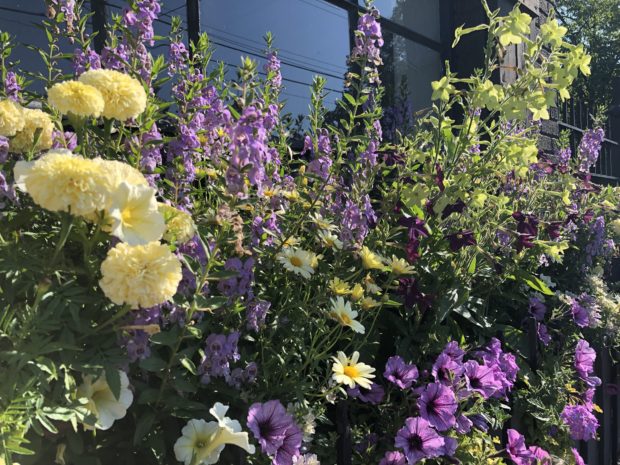 This yellow and carmine purple scheme looks great on a sunny day.
This yellow and carmine purple scheme looks great on a sunny day.
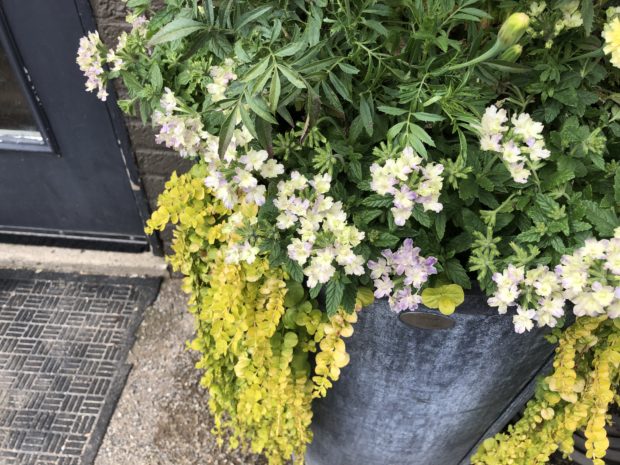 This cream yellow and lavender bicolor verbena named Limoncello tells the story of our pale yellow and purple color scheme. It is a new plant for us.
This cream yellow and lavender bicolor verbena named Limoncello tells the story of our pale yellow and purple color scheme. It is a new plant for us.
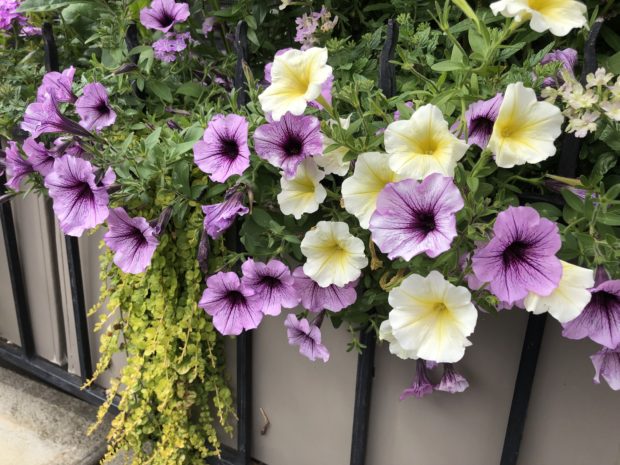 The petunias further represent the surprise combination of colors thematic to the summer planting at the shop. The color contrast is soft, and engaging. Our grower’s good supply of petunias played a substantial role in the design.
The petunias further represent the surprise combination of colors thematic to the summer planting at the shop. The color contrast is soft, and engaging. Our grower’s good supply of petunias played a substantial role in the design.
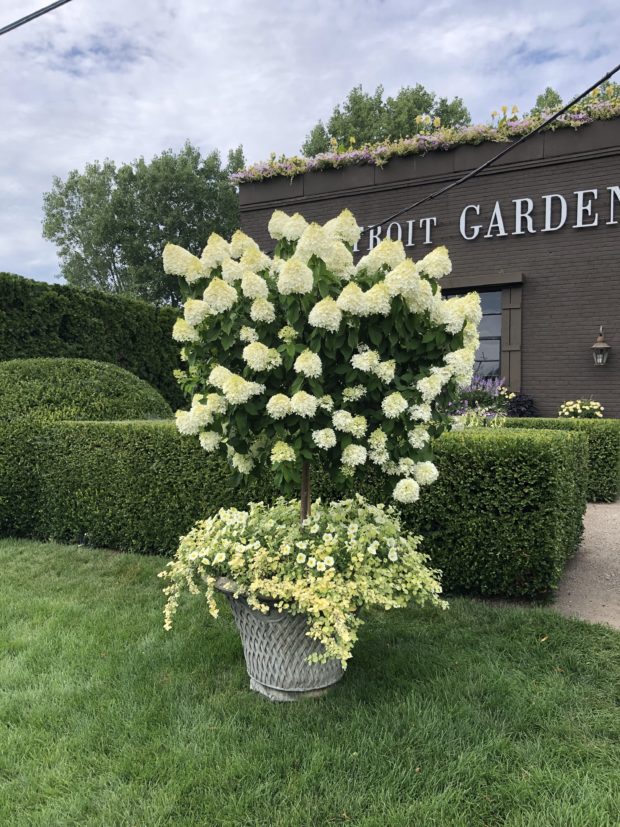 Four pots outside the front door of my office are planted with Limelight hydrangeas on standard. Those creamy and greenish white hydrangea flowers coming in to bloom are the star of the show. One pair is under planted with yellow petunias and lime licorice. The pots are large enough to permit more frequent watering the hydrangeas.
Four pots outside the front door of my office are planted with Limelight hydrangeas on standard. Those creamy and greenish white hydrangea flowers coming in to bloom are the star of the show. One pair is under planted with yellow petunias and lime licorice. The pots are large enough to permit more frequent watering the hydrangeas.
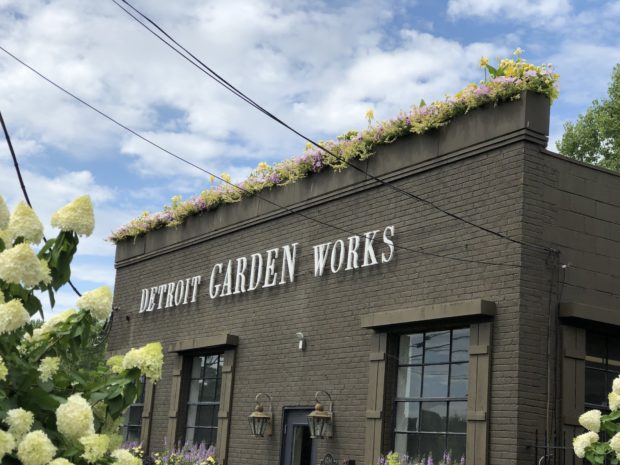 The planting on the roof is just starting to come in to is own. All of those pale yellow supporting plants? Pale yellow marigolds. Splashes of yellow cannas. The coleus “Wasabi” is planted in the back row, as it gets quite tall. It is amenable to being grown in full sun, as long as it gets sufficient water. The color is a sunny yellow – quite different than its lime green color in shady spots. Lime licorice, bordeaux and misty lilac wave petunias round out the planting. The roof boxes have automatic irrigation, as getting up there in person requires a very large and heavy extension ladder. That said, either Chelsea or Karen go up there twice a week to check on everything. Yes, we plant. Every chance we get.
The planting on the roof is just starting to come in to is own. All of those pale yellow supporting plants? Pale yellow marigolds. Splashes of yellow cannas. The coleus “Wasabi” is planted in the back row, as it gets quite tall. It is amenable to being grown in full sun, as long as it gets sufficient water. The color is a sunny yellow – quite different than its lime green color in shady spots. Lime licorice, bordeaux and misty lilac wave petunias round out the planting. The roof boxes have automatic irrigation, as getting up there in person requires a very large and heavy extension ladder. That said, either Chelsea or Karen go up there twice a week to check on everything. Yes, we plant. Every chance we get.
